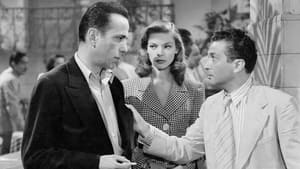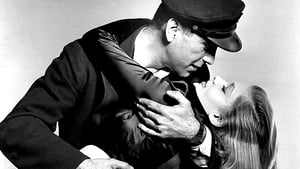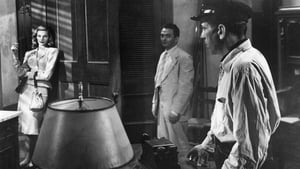Contact: [email protected]
Video Sources 0 Views

Synopsis
[ez-toc]




Introduction
In the expansive world of cinema, there are timeless classics that continue to captivate audiences across generations. “To Have and Have Not Colorized,” a 1945 film directed by the legendary Howard Hawks, falls into this elite category. Starring the iconic duo Humphrey Bogart and Lauren Bacall, the film has become a cultural touchstone. Now, in a bold move that has stirred both excitement and controversy, “To Have and Have Not Colorized” has undergone a transformative journey into the world of color.
Read Media File Transfer Agreement: Terms and Conditions
Read FAQ
The Colorization Debate
The decision to colorize classic films is a contentious one, sparking debates among cinephiles and purists. The essence of black and white cinematography holds a unique charm, and some argue that tampering with these classics is sacrilege. However, the proponents of colorization argue that it breathes new life into these old films, making them more relatable to contemporary audiences. This article delves into the intricacies of “To Have and Have Not Colorized 1945,” exploring the process, impact, and the broader conversation surrounding colorized versions of old movies.
The Making of “To Have and Have Not Colorized”
Howard Hawks and Ernest Hemingway Collaboration
“To Have and Have Not Colorized” originated from the collaboration between two titans of their respective fields: director Howard Hawks and author Ernest Hemingway. The film is loosely based on Hemingway’s novel of the same name, blending the rugged allure of Hemingway’s narrative with Hawks’ cinematic prowess. The collaboration resulted in a film that not only paid homage to Hemingway’s work but also carved its own niche in cinematic history.
The Cast: Bogart and Bacall
Central to the film’s allure is the magnetic pairing of Humphrey Bogart and Lauren Bacall. The chemistry between these two Hollywood legends extends beyond the screen, as their off-screen romance blossomed during the making of “To Have and Have Not Colorized.” This added layer of real-life connection infused the film with a palpable intensity, making it a classic in its own right.
A Colorful Journey: The Setting of “To Have and Have Not Colorized”
Vibrant Locations and Historical Backdrop
One of the defining features of “To Have and Have Not Colorized” is its rich, exotic locations. The film shuttles between the sun-soaked streets of Cuba and the sultry ambiance of Martinique. These locales, steeped in atmosphere, not only set the stage for the unfolding drama but also contribute significantly to the film’s visual appeal. Against the backdrop of World War II, the presence of the French resistance and Vichy France adds depth to the narrative, creating a cinematic experience that transcends the screen.
From Shades of Gray to Splashes of Color: The Art of Colorizing Classic Films
Unveiling the Colorization Process
Colorizing black and white movies involves a delicate balance between preserving the authenticity of the original film and infusing it with a new visual dimension. The earliest methods involved manual hand-painting, a painstaking process that required precision and artistry. As technology advanced, digital methods emerged, offering a more nuanced and efficient approach. However, the debate persists – does colorization enhance or diminish the essence of the original work?
Addressing Criticism and Preserving Artistic Integrity
Critics argue that colorization compromises the artistic integrity of classic films, altering the director’s original vision. Purists contend that the monochromatic palette of black and white cinematography holds a unique aesthetic that should remain untouched. However, proponents of colorization argue that it breathes new life into old films, attracting a broader audience and ensuring the preservation of cinematic treasures for future generations.
Preserving the Past: The Significance of Colorized Versions in Film Heritage
Accessibility for Contemporary Audiences
In the age of high-definition visuals and technicolor marvels, black and white films may seem antiquated to younger audiences. Colorization serves as a bridge, making these classics more accessible and appealing to contemporary viewers. Film preservation, in this context, goes beyond archiving; it becomes a dynamic effort to ensure that the cinematic legacy of yesteryear remains relevant.
Efforts in Restoration and Cultural Value
Archives and restoration experts play a crucial role in the preservation of colorized films. Their meticulous work ensures that the essence of the original film is retained, even as it undergoes a chromatic makeover. The cultural value embedded in these colorized versions extends beyond nostalgia, providing a lens through which modern audiences can appreciate the historical and artistic nuances of classic cinema.
The Colorful Revival: “To Have and Have Not Colorized” as a Transformed Viewing Experience
The Artistic Impact of Colorization
The colorization of “To Have and Have Not Colorized” brings a new dimension to its visual narrative. From the vibrant hues of the Caribbean to the muted tones of wartime intrigue, the colorized version amplifies the emotional resonance of the film. The impact on aesthetics and mood has garnered mixed reactions, with some praising the revitalized vibrancy and others expressing reservations about potential distortion.
Reception Among Fans and Critics
The release of the colorized version of “To Have and Have Not Colorized” ignited fervent discussions among fans and critics alike. Some purists rejected the notion outright, asserting that the film should remain untouched. Others embraced the colorized version, appreciating the fresh perspective it offered. As with any bold cinematic experiment, the reception was diverse, reflecting the varied tastes and expectations of the audience.
In Living Color: Analyzing the Success of Other Colorized Classics
Notable Examples: ‘Casablanca,’ ‘The Maltese Falcon,’ ‘The Big Sleep’
While the colorization debate persists, certain classics have successfully made the transition to color. “Casablanca,” “The Maltese Falcon,” and “The Big Sleep” stand out as examples where colorization has been met with acclaim. What sets these adaptations apart? Perhaps it lies in the delicate balance between enhancing the visual experience and preserving the film’s original essence.
Retaining Brilliance in Any Hue: The Role of Acting and Script in Preserving a Film’s Essence
Acting Interpretation and Screenwriting
The success of a film, regardless of its colorization status, hinges on the strength of its performances and the quality of its script. Evaluating “To Have and Have Not Colorized” in both its original black and white form and the colorized edition provides a unique opportunity to assess how acting interpretations withstand the transformation. Equally vital is the script’s adaptability, ensuring that the narrative integrity remains intact throughout the colorization process.
Beyond Black, White, and Technicolor: The Enduring Legacy of “To Have and Have Not Colorized”
Legacy of a Cinematic Masterpiece
Regardless of its colorized or original state, “To Have and Have Not Colorized” stands as a testament to the enduring power of storytelling. It is a cinematic masterpiece that transcends the constraints of time and medium. While the colorization may add a new layer to its visual appeal, the heart of the film lies in its narrative brilliance and the unforgettable performances of Bogart and Bacall.
Conclusion
Embracing the Color Makeover
“To Have and Have Not Colorized 1945” is more than a mere experiment; it is a testament to the evolving landscape of film preservation. As we navigate the debates surrounding colorization, it is crucial to appreciate the diverse formats that contribute to the preservation of cinematic treasures. The key takeaway from this exploration is not whether colorization is right or wrong but how it can enrich our cinematic experience while respecting the artistic intent of the original creators. As we delve into the colorful world of classic films, let’s embrace the past in all its hues and celebrate the enduring legacy of cinematic brilliance.














